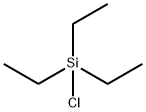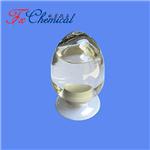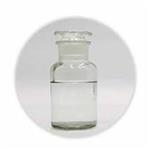
Triethylsilane
- Product NameTriethylsilane
- CAS617-86-7
- CBNumberCB8495938
- MFC6H16Si
- MW116.28
- EINECS210-535-3
- MDL NumberMFCD00009018
- MOL File617-86-7.mol
- MSDS FileSDS
Chemical Properties
| Melting point | -157°C |
| Boiling point | 107-108 °C (lit.) |
| Density | 0.728 g/mL at 25 °C (lit.) |
| vapor pressure | >1 hPa (20 °C) |
| refractive index | n |
| Flash point | 25 °F |
| storage temp. | Store below +30°C. |
| solubility | insol H2O; sol hydrocarbons, halocarbons, ethers. |
| form | liquid |
| color | colorless |
| Specific Gravity | 0.728 |
| Water Solubility | Miscible with water. |
| Sensitive | Moisture Sensitive |
| Hydrolytic Sensitivity | 3: reacts with aqueous base |
| BRN | 1098278 |
| Stability | Stable, but moisture sensitive. Highly flammable. Generates highly flammable gas (hydrogen) in contact with water, acids and bases. |
| LogP | 3.6 at 20℃ |
| CAS DataBase Reference | 617-86-7(CAS DataBase Reference) |
Safety
| Symbol(GHS) |
 
|
|||||||||
| Signal word | Danger | |||||||||
| Hazard statements | H225-H315-H319-H335 | |||||||||
| Precautionary statements | P210-P233-P240-P241-P303+P361+P353-P305+P351+P338 | |||||||||
| Hazard Codes | F,Xi | |||||||||
| Risk Statements | 11-36/37/38-52/53 | |||||||||
| Safety Statements | 9-16-29-33-37/39-26-61 | |||||||||
| RIDADR | UN 1993 3/PG 2 | |||||||||
| WGK Germany | 1 | |||||||||
| F | 10-21 | |||||||||
| TSCA | Yes | |||||||||
| HazardClass | 3 | |||||||||
| PackingGroup | II | |||||||||
| HS Code | 29310095 | |||||||||
| NFPA 704: |
|



